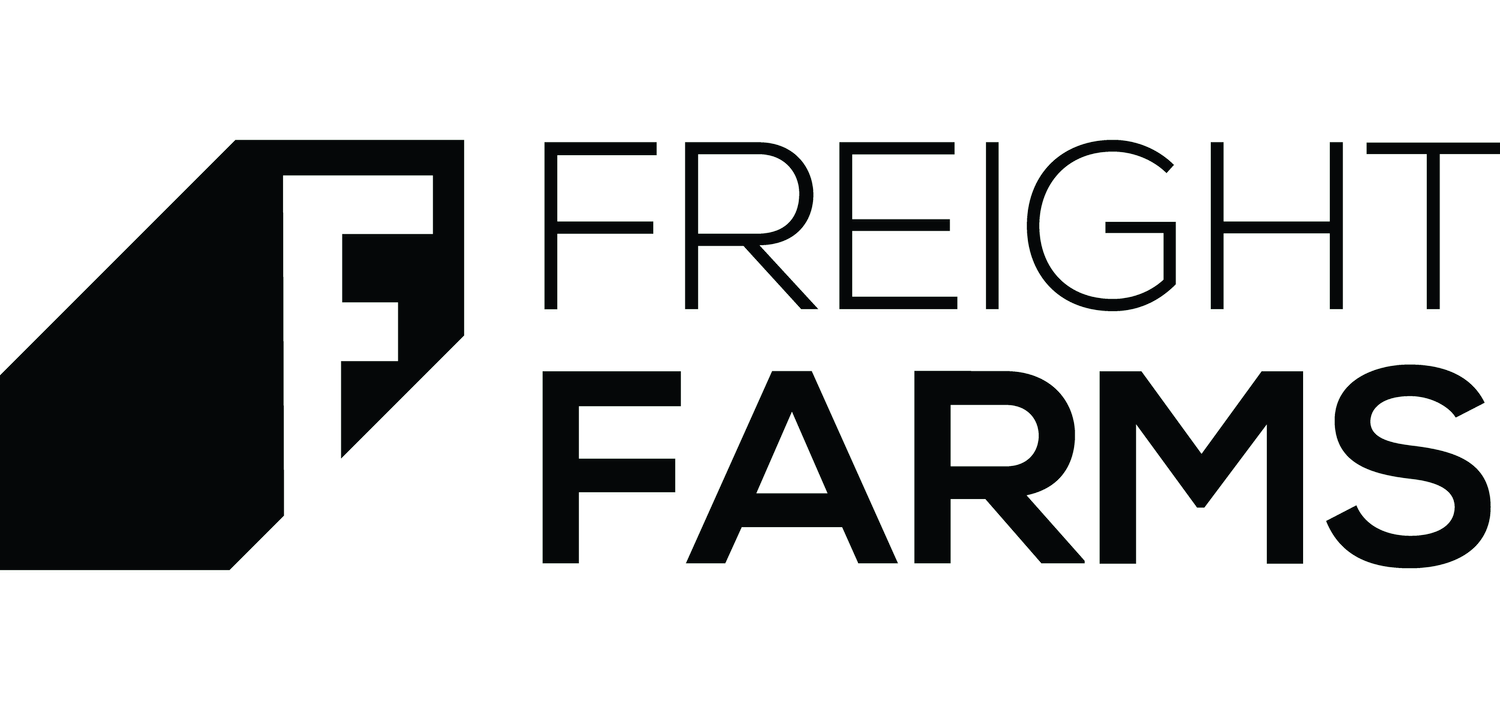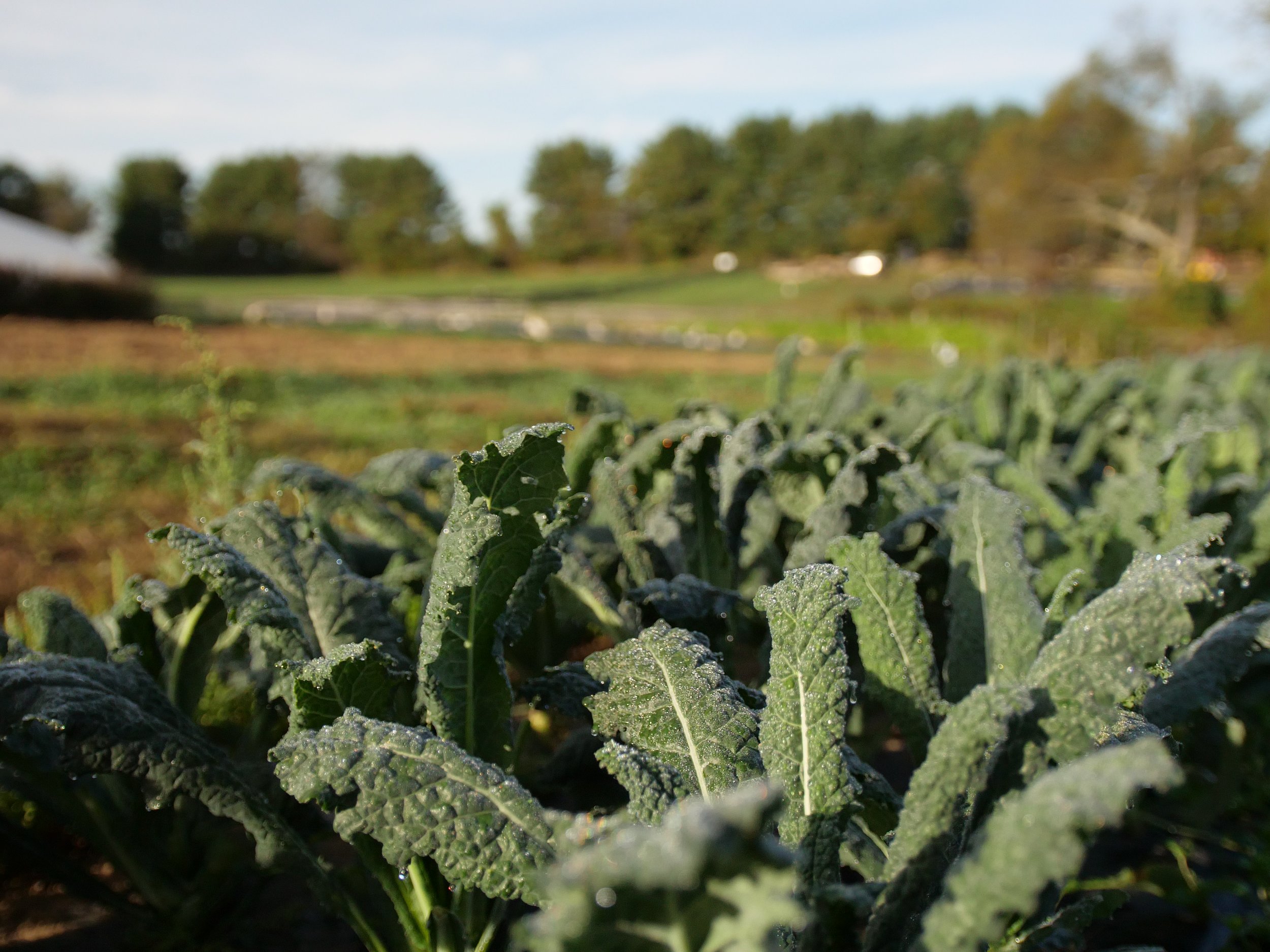Webinar Recap: Karma Farm
At first glance, this Baltimore area family farm appears similar to its neighbors. However, tucked away neatly between a barn and a rickety wooden fence is a shipping container outfitted with the latest hydroponic growing technology. This 40-foot container is, in fact, a farm.
The Shaws added the Leafy Green Machine™ to their farm in early 2017 to combine their existing traditional farm with a full-time hydroponic operation. On November 16th we sat down with Jon and Nat Shaw of Karma Farm to record a webinar with the hopes of harnessing all of their knowledge and experience for future Freight Farmers. During the hour-long interview, we discussed all things Karma Farm: how they got started, how they discovered and incorporated hydroponics, how they found their customers, and how they have impacted the Baltimore restaurant community.
Check out the full webinar recording:
For those of you who didn't get a chance to listen live, or are looking for a shorter summary, keep reading! Below we've outlined the main points from our discussion as well as some follow-up questions with Jon and Nat.
Meet the Farmers
Nat Shaw
Nat is currently in his last semester at the University of Baltimore, where he studies Business with a focus on Entrepreneurship. Beyond being a student, Nat loves action sports and spending time outdoors. Nat is also the primary operator of the Leafy Green Machine on Karma Farm.
Jon Shaw
While Jon has a career background in IT and business, he has always loved growing food in his organic garden. After finding a niche in the Baltimore restaurant scene, Jon transitioned to full time farming. While Nat farms in the LGM, Jon focuses on the farm's soil operations.
Karma Farm
Karma Farm is located in Monkton, MD. The 13-acre piece of land was once a horse farm, but Jon has since turned his attention to vegetable farming on 4 fertile acres of land. One year, Jon had too much produce to simply give away to his neighbors, so he started going door-to-door at farm-to-table restaurants nearby. Not only did he sell all his produce, but the chefs were excited at the prospect of having a constant source of local and high quality vegetable on their menus. They encourage Jon to come back, and the Karma Farm business was born.
What They Grow
With a combination of traditional growing and season extension methods, Karma Farms grows an astounding variety of produce: tomatoes, eggplants, peppers, lettuces, leafy greens (like kale and Swiss chard), broccoli, root vegetables, squashes, and herbs.
How They Grow
While Karma Farm is not certified USDA organic, they adhere strictly to organic practices. They use natural fertilizer from their compost pile and a neighboring horse farm. Any pesticides they use are approved organic, and they never use any herbicides.
Business Model
Jon and Nat have experimented with both CSA programs and selling directly to restaurants. CSA stands for Community Support Agriculture, where subscribers pay in advance and farmers then deliver produce weekly or monthly. Jon found the CSA program too time- and labor- intensive for it to be a viable long-term solution for the business.
On the other hand, restaurants can be a gold mine. Today, Karma Farm supplies 15 to 20 Baltimore area restaurants.
“Finding a couple of serious farm-to-table restaurants in your area becomes foundational to your business. If you can find some good restaurants with good reputations that are busy and high-volume, you can use those relationships as a way to build your business”
Do produce distributors buy directly from farms? Have you looked into selling bulk to distributors rather than many restaurants?
Jon: Produce distributors generally buy direct from larger farms. Since we have limited production scale compared to California growers, or the large greenhouse hydro operations on the East Coast, it doesn’t make sense for us to go through distributors to sell our produce.
Discovery & Incorporation
Nat was the first Shaw to see the value of hydroponics for this traditional farm. He discovered hydroponics as part of an entrepreneurship project for school. During his research, he stumbled upon the Leafy Green Machine™, and saw its value as a turnkey solution which shortens the learning curve to get farmers growing faster. He put together a business case and presented it to his father.
Nat's proposal came at a critical moment in Karma Farm's operations. Jon was seriously considering ending the business: long hours working the farm were taking their toll. He and Nat decided that, by ending their CSA program and incorporating the LGM (which Nat would operate), Jon's workload would be lessened. Beyond this, bringing the LGM onto the farm promised an edge over competitors, and the possibility for the farm to turn a profit for the first time.
“When you incorporate the technology where you have 52-week production, not only do you have the capability to do local produce that nobody else in your area is doing, but there are also certain crops that you can grow that...restaurants really like.”
How does the LGM compare to other season-extension efforts like hoophouses or caterpillar tunnels, etc.?
Jon: The LGM is far superior in that there is no slowdown in the growth cycle to due to shorter days, which leads to consistent production. For example, with hoop house season extension one has to start the plants very early in the fall so they put on some growth before the days get too short and growth stops.
What is an average week in the LGM?
Nat: I try and harvest 64 towers a week so that we can turn the entire inventory of the box in 4 weeks and get 13 full harvests in a year. I go in and I harvest for the beginning half of the week on Mondays. I harvest everything, package it, and get it in the refrigerator. Then I transplant the first half of the weeks transplants – the equivalent to the amount of towers I had just harvested – so between 500 and 600 plants. Occasionally I will also do the first half of the weeks seeding that day as well. Later in the week, let’s say Wednesday, I harvest for the second delivery of the week (usually on Thursday or Friday). After this, I go through the transplanting and seeding again, all the while running maintenance in the farm when needed.
Marketing
Jon and Nat agree: communicating the benefits of a combined operation (traditional + hydroponics) to potential customers is their biggest marketing goal. Typically, Jon – who handles all Karma Farm marketing – encounters two types of customers. The first are simply excited about a continuous source of fresh vegetables. The second group are more difficult to convince. They typically have a "romantic" idea of farming and are suspicious of new technology.
When marketing to skeptics, Jon always talks about the LGM's (lack of) environmental impact: less water is used, no fossil fuels are needed, and each high-efficiency container saves undeveloped land that might otherwise be converted to farmland.
Jon also has a secret weapon. He frequently invites chefs to Karma Farm and administers a blind taste test between a traditionally grown and a hydroponically grown lettuce. Chefs become convinced when they realize that the hydroponic lettuce tastes just as good, or even better than, lettuce grown in the ground.
What kind of tactics to you use when you approach new restaurant customers?
Jon: I will commonly go to a restaurant in the mid-afternoon. This is when the lunch service is winding down and the dinner service has yet to start and the chef is most likely to not be busy and have time to talk to me. Also, I always bring samples. Not only do samples show how great our product is, but they usually encourage the chef to order with us at least once.
Choosing What to Grow
Karma Farm splits its crops between traditional methods and the Leafy Green Machine. Today, Nat grows red vein sorrel, arugula, chervil, lettuce, tatsoi, and scarlet frills in the LGM.
While Nat has a standard crop list, he and Jon always make sure to take their customers into account. Once a year they meet with their main customers for a "grower meeting" where the Shaws outline their plans for the year and take requests.
“It’s really fun having a Leafy Green Machine because there’s a lot of things that you can grow that are really hard to grow outside, or that you can grow outside, but are extremely seasonal.”
Are you growing with seeds supplied by Freight Farms through the app? Or are you sourcing your seeds and supplies elsewhere? If not, how much more farm knowledge does it take?
Jon: We buy our seeds direct from firms like Johnny’s Seeds but buy our pellets from Freight Farms. For nutrients we’ve been going to AmHydro. It doesn’t take any additional knowledge to buy direct.
How do you negotiate prices for your hydroponic produce?
Jon: In terms of the LGM, we don’t typically price things like lettuce by the pound: we typically price it by the head. Even things like sorrel or arugula, we price by the pellet, because you get more than one plant in that case. So, we will sell sorrel in a pack of six pellets.
Nat: So that’s an even bigger benefit because you’re not cutting the plant and each plant has an individual nature, so you can sell that as its own product, and get a higher price for it.
Advice to Future Freight Farmers
Get out there! Talk to customers, get to know people, create networks in the restaurant community.
Have a handout you can give to potential customers which lists what produce you grow.
When thinking about your business strategy, consider the time and labor of your distribution channels.
Promote your ability to sell rooted plants; this is very valuable for restaurant chefs!
Step out of your comfort zone. There are several unique and valuable plants you can grow in the LGM.






